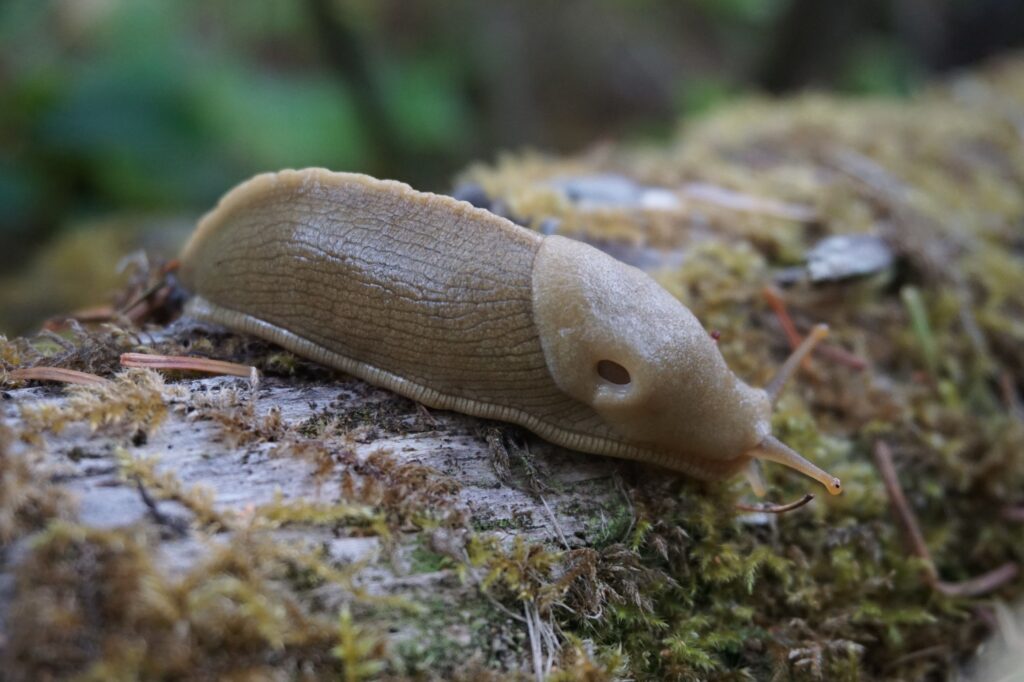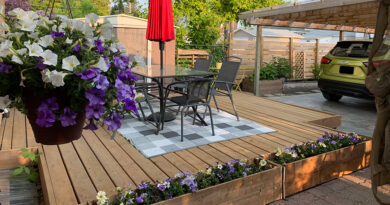An Attempt to Appreciate Slugs
Nobody likes slugs. Well, nobody except, maybe, five-year-old boys. For gardeners, they chew holes in foliage and leave a very difficult-to-wash-off slime on your gloves or fingers if you try to pick them off. Also, they’re pretty gross.

But just because you don’t like them doesn’t mean you can’t appreciate slugs. They are fairly interesting creatures!
Slugs are all related at the order level of biology, which is pretty high up the chain; it’s like referring to a dog as a mammal. Snails are closely related; slugs are just a naked type of snail. Some retain a bit of shell inside, under the mantle, where it does little to protect them. It’s considered vestigial.
The typical slug breathes through a hole in the side of its body called a pneumostome. It is quite alarming looking if you don’t know it should be there. It has four antennae-like tentacles; the two at the back; the two at the back are for smelling and have eyes on them, the two at the front are for tasting and feeling. Under the front tentacles is the radula, a kind of tongue that grates away at food with tiny teeth.
And of course, slugs are covered in slime. This slime is, in fact, a liquid crystal, in that it flows a little bit like a liquid, but the cells are lined up like a crystal. The slime has several purposes. One is to help the slug move on one foot by rhythmically flexing its muscles; the slime creates a near frictionless area to glide over. At the same time, it creates a kind of glue for the slug to move up vertical surfaces.
This thin, watery slime contains pheromones, which other slugs detect to tell them a little about the slug, like if the slug is looking to mate. Too bad it also tells other creatures where the slug is and predators can find a slug by following its slime trail.
A thicker slime covers the slug to prevent it from drying out and to make it distasteful to many predators. The slime is also said to have a numbing effect, and some indigenous North Americans used slugs for relief from toothaches.
Slugs are hermaphrodites: an individual is both male and female. When they mate, they twine around each other. The leopard slug, which is native to Europe but has immigrated to Canada, mates suspended from a slime rope, with its genitals knotted up below it. When they are done, they eat the rope. Then they both go off somewhere and lay hundreds of eggs.
These eggs can survive in the soil until conditions are right for slugs to hatch, sometimes being dormant for years. A leopard slug will live for about two years from the time it hatches. Some slugs only last through the summer; others can live for as long as six years.
All this information aside, what do you do if you want to keep your garden slug free? There is no perfect answer, and the best you can hope for is to keep the slug damage to a minimum.
Copper placed around plants does not work, at least not for more than a couple of days. Diatomaceous earth and crushed eggshells have limited value when placed around plants, and diatomaceous earth washes into the soil when it rains or when you water. Coffee grounds may work a little, but probably not; the slugs can go over the grounds, though it may cause them to die later. Commercial slug pellets kill the slugs as well as, possibly, other species.
One sure-fire way of reducing the number of slugs in your garden is to go out and hand-pick them after dark. If you choose to keep them alive, let them free a good way away so they don’t come back. If you choose to kill them, try salt (presumably painful) or soapy water.
You can also spray diluted household ammonia, one part ammonia to six parts water. It works on slug eggs as well but doesn’t harm other garden flora or fauna. You can water only in the morning so that the damp places where slugs like to hide dry up during the day. And you can favour plants that slugs don’t attack, like thick-leafed hostas.



